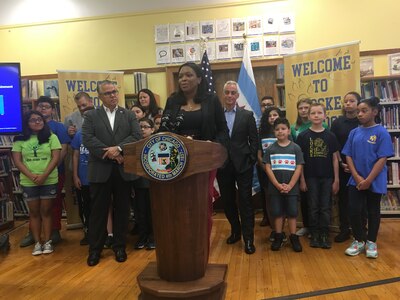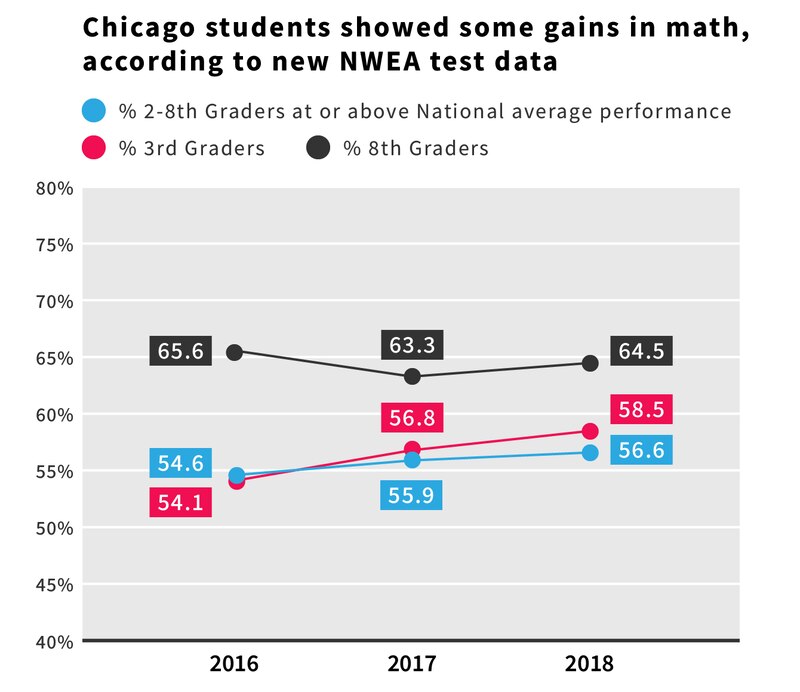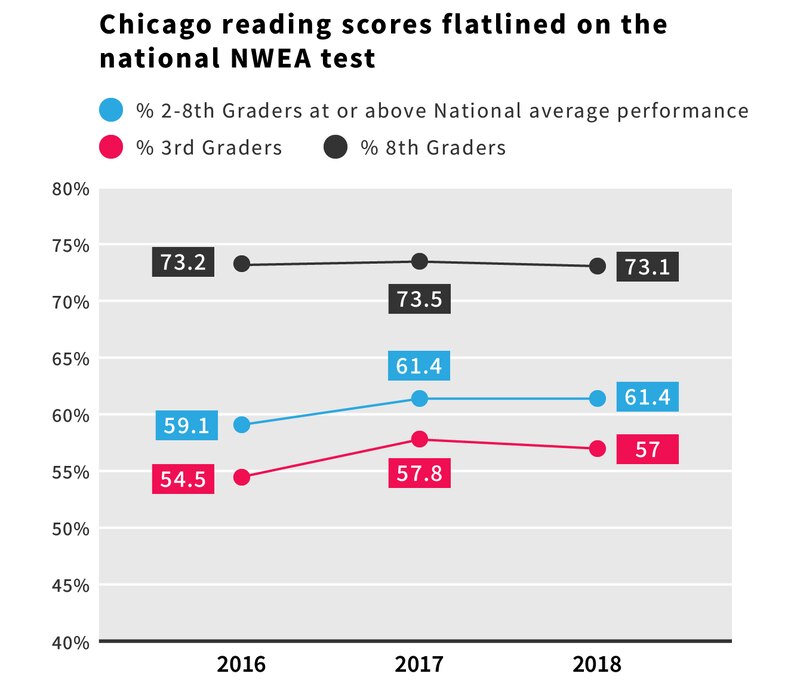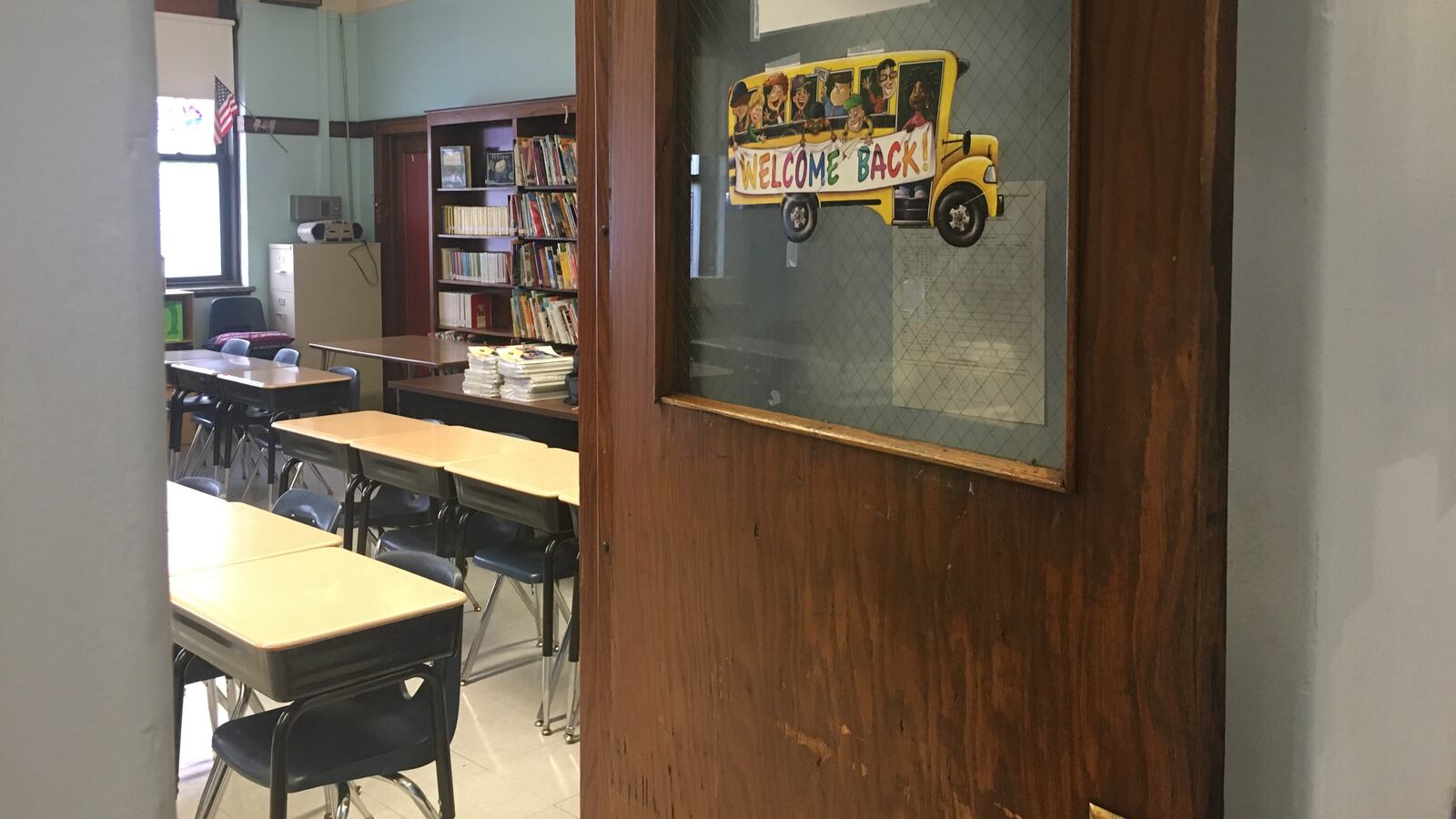Chicago students showed small gains in math but saw scores flatline in reading, according to new test scores released Wednesday.
Chicago Public Schools officials cited the new scores, on a national test called NWEA that city students take each year, as evidence that the district’s efforts to boost math skills are paying off. A school’s NWEA scores determine a big part of its quality rating, meaning that a district’s top-rated schools generally have stronger scores. Click here to use our database and see how your school stacks up.
The latest scores are separate from Illinois state test results. But they matter a lot in Chicago, where they also factor into an eighth-grader’s admission score to selective enrollment high schools and other competitive programs. A boost now offers Mayor Rahm Emanuel, who is up for reelection, another data point to cite in his contested bid, adding to a recent study by a Stanford University researcher that identified Chicago as the fastest-improving urban district in the country.

Announcing the scores at Josephine Locke Elementary in Montclare, on the Far West Side just over the border from suburban Elmwood Park, Emanuel said the city isn’t yet satisfied with how students are performing, but their long-term progress was worth celebrating.
“If you know anything about Chicago Public Schools, and the teachers and the principals throughout the system, nobody is spiking the ball at the 20-yard line,” said Emanuel, alongside Chicago schools CEO Janice Jackson. “But we should take note that, a short time ago, we were less than 50 percent of our kids reading or doing math at grade level or exceeding that.”

In reading, 61.4 percent of the district’s students in grades two through eight were on pace with their peers nationally or exceeding them, the same as in spring 2017. In math, 56.6 percent of students were on pace or exceeding it in spring 2018, compared to 55.9 percent the year prior.

In terms of how much progress students made over a single school year — their growth, in testing terms — 58.1 percent of Chicago students made the national average amount of progress in reading; 56.8 percent made the national average amount of progress in math.
Asked afterwards how specific groups of students performed, Jackson said half of black students in Chicago still aren’t achieving at grade level. When it comes to Latino learners, 61 percent met or exceeded grade level on the national assessment, compared to 86 percent of Asian students and 83.7 percent of whites. Latinos and African-American students make up the vast majority of the Chicago Public Schools population.
Jackson also said the district recognizes the stagnation, but the district has charged administrators with doing a better job by its black students this year. They’ve also worked to spread the word about the rollout of universal pre-K, which she believes will give children, particularly low-income ones, a stronger academic foundation.
“What got us to this point won’t get us to the next level,” she said.
Chicago schools administer the NWEA-MAP assessment in spring to second- through eighth-graders, with the option to use it as a midyear assessment. Many schools exercise this option so that teachers have a yardstick for student progress.
John Fitzpatrick, the principal at Locke, a pre-K-to-8 neighborhood school that is predominantly Latino, said he’s watched his school’s reading scores increase after putting new emphasis on reading, and math scores increase after focusing on math. This year, they used the assessment in first through eighth grade to tailor small group instruction in math, he said.
“So now we are trying to balance the whole thing,” he said. Still, scores don’t jump every year, he added.
“It’s like being on a diet and going on a scale — you can’t get frustrated. A couple of weeks you are going to stay the same. You just have to keep going.”

